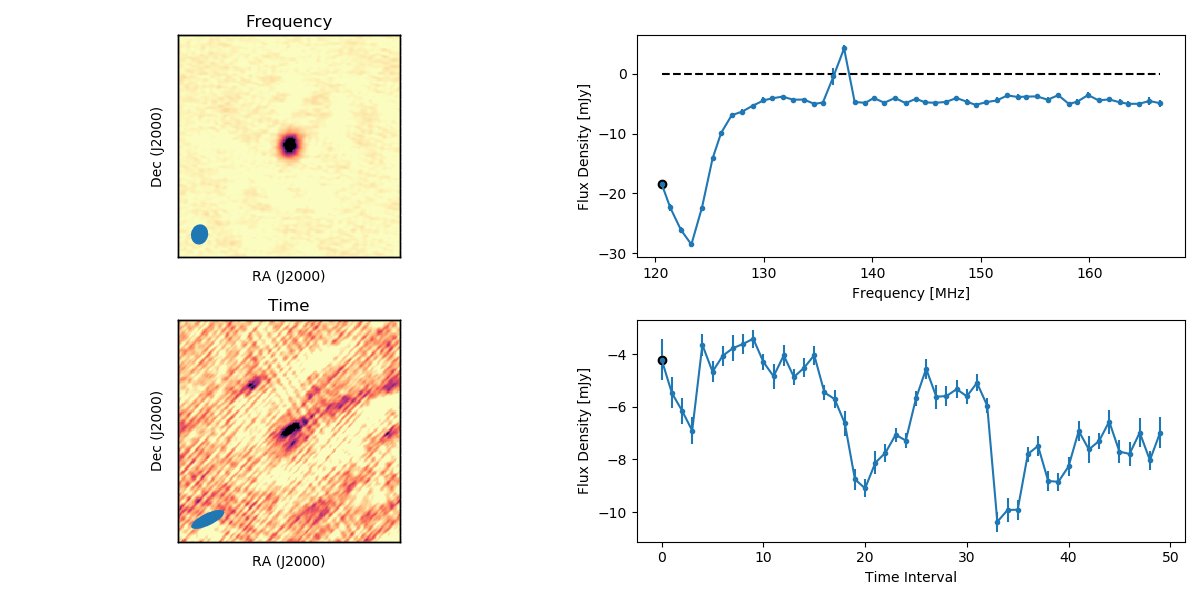| Description: | Stars are not bright radio emitters. An exceptional class of “flare” stars and some stars in close binaries are known to emit radio waves several orders of magnitude more powerful than those from the Sun. Such radio emission is either short in duration and highly polarised or is largely unpolarised and long. However, new radio sources found in the LOFAR Two-Metre Sky Survey (LoTSS) show a new type of stellar radio emission - long duration, near 100% circularly polarised emission. We have detected this type of emission in both quiescent and flare stars, suggesting that the underlying mechanism must be largely independent of canonical chromospheric activity observed on stars at gigahertz-frequencies. One intriguing possibility is this emission is being driven by a star-planet electrodynamic interaction - a scaled up version of the well known Jupiter-Io system.
The animation here shows the time-frequency structure for one such star. Not only was this star visible for the entire 8 hour observation, but it maintained nearly 100% circular polarization for that duration and across the entire 50 MHz bandwidth centred at ~145 MHz. The emission characteristics are reminiscent of the Jupiter-Io system which shows highly circularly polarized, broadband, and long-duration emission modulated by Io's orbit. The success of such models to replicate the detailed time-frequency structure and energetic considerations would lead to a new method of exoplanet detection, the first at radio frequencies. |

